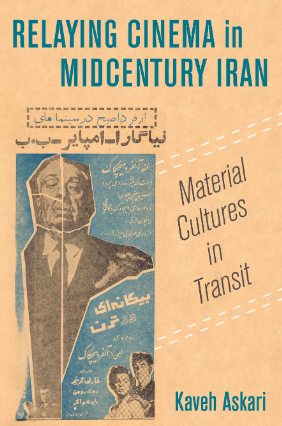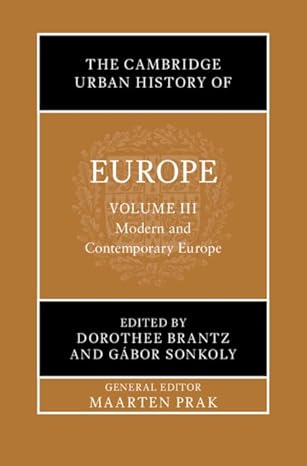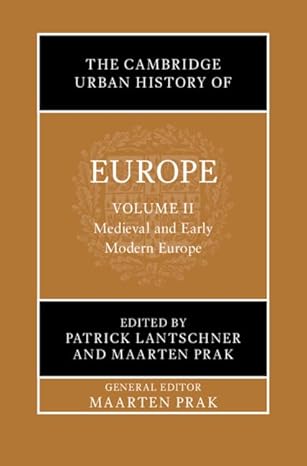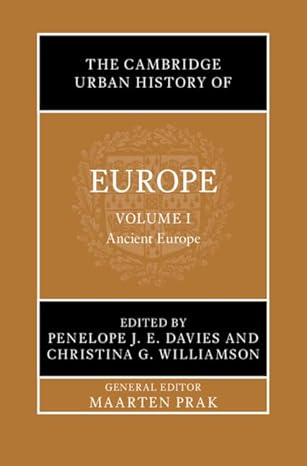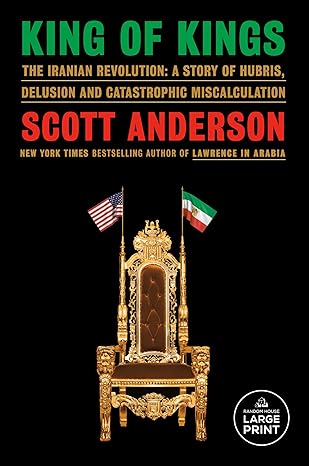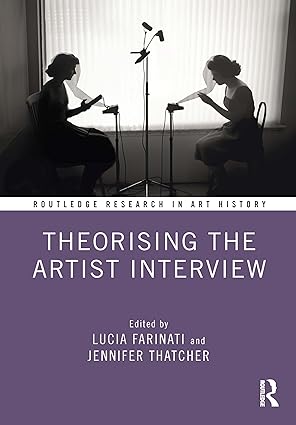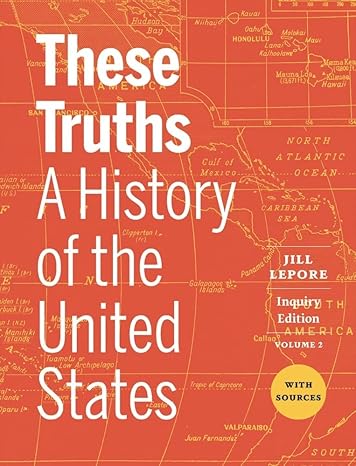An Afterlife for Junk Prints | 29 when tracing the histories of film’s global circulation, as they tend to assume a kind of simple delay from one place to another. The notion of a simply delayed film culture (as opposed to an incongruous one) comes too close to the touristic fantasy that one (peripheral) place represents the past of another (central) place.11 Junk, when foregrounded, con- fronts these assumptions, as junkspaces combine fragments of different historical periods in unplanned ways. Junk augments the conceptions of archaeology that have influenced much of the post-1960s media historiography. Archaeology has proven an especially fruitful metaphor in film study, from classic work by C. W. Ceram to the authoritative recent history by Laurent Mannoni to experimental work by filmmakers such as Gustav Deutsch. 12 Archaeol- ogy and junk are intimately related, whether acknowledged or not.13 A modern archaeology acknowledges the redundancy of a phrase like archaeology of junk. It aligns itself not with what the Futurists con- demned as “the chronic necrophilia” of the archaeologists who fetishize antiquity but rather with the “perfume of garbage,” to the modernist interest in the material culture of the everyday and its surprising rev- elations.14 A modern everyday medium, periodically relegated to and rescued from junk heaps, with its own sour perfumes of decay, cinema proves an easier fit for this approach than most other media.15 To consider junk film’s afterlife makes clear that the life of a film, while still painfully short to the preservationist, turns out to be nowhere near as short as Valentia Steer assumed. From a transnational perspec- tive, Steer’s “fifth-rate picture theaters” only begin the stories of the films’ afterlives. The description of film as “worn-out rubbish” could be taken now as a testimony to the longevity and adaptability of these prints. It could draw attention to how the films’ object-lives help to shape the translations that occur in new exhibition contexts. Case stud- ies of the prints’ age and the intermediary stages of their circulation in the region reveal inventive and often counterintuitive reuses of junk film. The labors of reuse created value by reordering film reels and transforming their themes. Film Traffic and Regional Influence In following silent cinema’s steps toward sustainable commercial exhi- bition in Iran, the locations of regional relay points reveal as much as the places where the films were produced. Such relay points can often hide in plain sight. International commerce statistics provide some of 30 | Chapter 1 the most accessible clues about the films shown on commercial screens in Tehran. There were around thirty cinemas operating in Iran in the late 1920s, with just under half of these located in the capital. 16 These cine- mas subsisted on a steady stream of imports accounted for in one report by the US Department of Commerce. Statistics confirm that American and French productions far exceed those of any other country, and their share of the market remains fairly stable despite taking an obvious hit from the economic crisis. The low numbers overall and the decreased numbers in 1930 mark disappointment in what the commerce depart- ment hoped would be “a promising field for exploitation.”17 But the origins and number of these imported films do not tell the whole story. Exhibitor advertisements from the 1920s and 1930s in the Persian- language daily Ettela’at provide more information about the films rep- resented by the import figures. Launched in 1926, the paper is one of the best sources for evidence about the films from this period. Cinemas advertised in Ettela’at from the beginning. In the first few years of the paper’s run, the only regular film advertisements came from the Grand Cinema operated by Ali Vakili in conjunction with the Grand Hotel on Lalezar Avenue (figure 5). Beginning around 1929, the film ads become more diverse, with cinemas Sepah, Zartoshtian (both also owned by Vakili), Pars, Tehran, and Baharestan among the frequent advertisers. These cinemas do not present a comprehensive view of film exhibition in Tehran, but the regularity of advertisements and continual experi- ments with tie-in stunts offer a glimpse into exhibition practices and policies at an array of major theaters in the city.
چکیده فارسی
یک زندگی پس از مرگ برای چاپ های ناخواسته | 29 هنگام ردیابی تاریخچه گردش جهانی فیلم، زیرا آنها تمایل دارند نوعی تاخیر ساده را از جایی به مکان دیگر فرض کنند. مفهوم فرهنگ فیلمی با تأخیر ساده (در مقابل فرهنگ نامتجانس) به فانتزی توریستی که یک مکان (پیرامونی) نشان دهنده گذشته مکان (مرکزی) دیگر است، بسیار نزدیک است. ، زیرا فضاهای ناخواسته قطعاتی از دوره های مختلف تاریخی را به روش های برنامه ریزی نشده ترکیب می کنند. آشغال مفاهیم باستان شناسی را تقویت می کند که بر بسیاری از تاریخ نگاری رسانه های پس از دهه 1960 تأثیر گذاشته است. باستان شناسی استعاره ای به ویژه پربار در مطالعه فیلم، از آثار کلاسیک سی دبلیو سرام گرفته تا تاریخ معتبر اخیر لوران مانونی تا کارهای تجربی فیلمسازانی مانند گوستاو دویچ را ثابت کرده است. 12 باستانشناسی و آشغالها ارتباط نزدیکی با هم دارند، خواه تصدیق شوند یا نه. این خود را نه با آنچه که آیندهگرایان به عنوان «نکروفیلی مزمن» باستانشناسانی که دوران باستان را فتیش میکنند، محکوم میکنند، بلکه با «عطر زباله»، با علاقه مدرنیستی به فرهنگ مادی روزمره و مکاشفههای شگفتانگیز آن همسو میشود. 14. سینما یک رسانه مدرن روزمره، که به طور دورهای به انبوه زبالهها تنزل مییابد و از آن نجات مییابد، با عطرهای ترش پوسیدگی خود، نشان میدهد که سینما برای این رویکرد راحتتر از سایر رسانهها مناسب است. فیلم، در حالی که هنوز به طرز دردناکی برای محافظهکار کوتاه است، بهاندازهای که والنتیا استیر تصور میکرد کوتاه نیست. از منظر فراملی، «تئاترهای تصویری درجه پنجم» استیر فقط داستان زندگی پس از مرگ فیلمها را آغاز میکنند. توصیف فیلم به عنوان «آشغال های فرسوده» را می توان اکنون به عنوان شاهدی بر طول عمر و سازگاری این چاپ ها در نظر گرفت. این می تواند توجه را به این موضوع جلب کند که چگونه زندگی ابژه فیلم ها به شکل دادن به ترجمه هایی که در زمینه های نمایشگاهی جدید رخ می دهند کمک می کند. مطالعات موردی مربوط به دوران چاپ و مراحل میانی انتشار آنها در منطقه، استفاده مجدد مبتکرانه و اغلب ضد شهودی از فیلم های ناخواسته را نشان می دهد. زحمات استفاده مجدد با مرتب کردن مجدد قرقره های فیلم و تغییر مضامین آنها ارزش ایجاد کرد. ترافیک فیلم و تأثیر منطقهای در پیروی از گامهای سینمای صامت به سمت نمایشگاه تجاری پایدار در ایران، مکانهای رله منطقهای به اندازه مکانهایی که فیلمها در آن تولید شدهاند آشکار میشود. چنین نقاط رله ای اغلب می توانند در دید آشکار پنهان شوند. آمار بازرگانی بین المللی برخی از 30 | فصل 1 در دسترس ترین سرنخ ها در مورد فیلم های نمایش داده شده در اکران های تجاری در تهران. در اواخر دهه 1920 حدود 30 سینما در ایران فعال بودند که کمتر از نیمی از آنها در پایتخت قرار داشتند. 16 این سینماها با جریان ثابتی از واردات که در یکی از گزارش های وزارت بازرگانی ایالات متحده ذکر شده است، زندگی می کردند. آمارها تایید میکنند که تولیدات آمریکا و فرانسه بسیار فراتر از تولیدات هر کشور دیگری است و سهم آنها از بازار علیرغم ضربه آشکار از بحران اقتصادی، نسبتاً ثابت باقی میماند. به طور کلی اعداد کم و کاهش تعداد در سال 1930 نشان دهنده ناامیدی از آنچه که وزارت بازرگانی امیدوار بود «زمینه ای امیدوارکننده برای بهره برداری» باشد. 17 اما خاستگاه و تعداد این فیلم های وارداتی تمام داستان را بیان نمی کند. آگهیهای غرفهداران مربوط به دهههای 1920 و 1930 در روزنامه فارسی زبان اطلاعات، اطلاعات بیشتری درباره فیلمهایی که ارقام وارداتی نشان میدهند، ارائه میدهد. این مقاله که در سال 1926 راه اندازی شد، یکی از بهترین منابع برای شواهد در مورد فیلم های این دوره است. سینماها از ابتدا در اطلاعات تبلیغ میشدند. در چند سال اول انتشار روزنامه، تنها تبلیغات معمولی فیلم از گراند سینما به مدیریت علی وکیلی و همراه با گراند هتل در خیابان لاله زار می آمد (تصویر 5). از حدود سال 1929، تبلیغات فیلم متنوعتر شد و سینماهای سپه، زرتشتیان (که هر دو متعلق به وکیلی هستند)، پارس، تهران و بهارستان در میان آگهیدهندگان مکرر بودند. این سینماها دید جامعی از نمایشگاه فیلم در تهران ارائه نمیدهند، اما منظم بودن تبلیغات و آزمایشهای مستمر با بدلکاریهای کراوات، نگاهی اجمالی به شیوهها و سیاستهای نمایشگاهی در مجموعهای از سالنهای اصلی شهر دارد.
ادامه ...
بستن ...
University of California Press
Oakland, California
© 2022 by Kaveh Askari
Library of Congress Cataloging-in-Publication Data
Names: Askari, Kaveh, author.
Title: Relaying cinema in midcentury Iran : material cultures in
transit / Kaveh Askari.
Other titles: Cinema cultures in contact ; 2.
Description: Oakland, California : University of California Press,
[2022] | Series: Cinema Cultures in Contact ; 2 | Includes
bibliographical references and index.
Identifiers: LCCN 2021033097 (print) | LCCN 2021033098 (ebook) |
ISBN 9780520329751 (cloth) | ISBN 9780520329768 (paperback) |
ISBN 9780520974357 (epub)
Subjects: LCSH: Motion pictures—Iran—History. | Motion picture
industry—Iran—History. | BISAC: PERFORMING ARTS / Film /
History & Criticism | HISTORY / World
Classification: LCC PN1993.5.i846 a84 2022 (print) |
LCC PN1993.5.i846 (ebook) | DDC 791.430955—dc23
LC record available at https:// lccn .loc .gov /2021033097
LC ebook record available at https:// lccn.loc.gov /2021033098
Manufactured in the United States of America
31 30 29 28 27 26 25 24 23 22
10 9 8 7 6 5 4 3
ادامه ...
بستن ...
